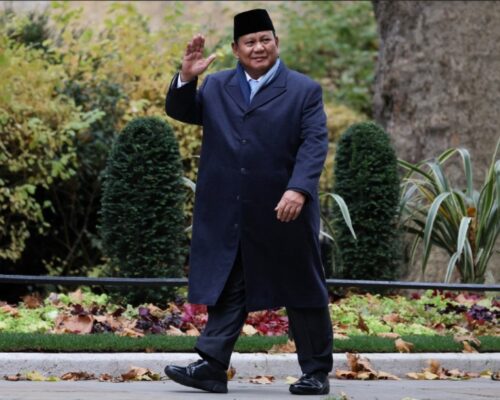Renewable Energy Projects in the Philippines: 100% Foreign Ownership Authorised
15 May 2023 – by Tim Daiss
The government recently authorised full foreign ownership in the Philippines’ renewable energy projects. Previously, foreign firms could own only up to 40% of an energy project, with the balance being held by a Filipino firm or citizen.
Foreign investors can now hold 100% equity in the exploration, development and utilisation of solar, wind, hydro and ocean or tidal renewable energy resources. Foreign firms already operating in a joint venture with a Filipino partner may now take a controlling stake in such ventures.
Southeast Asia Needs Green Funds
The investment policy shift in renewable energy projects in the Philippines aligns with international calls for Southeast Asian nations to ramp up foreign capital to develop their respective renewable energy sectors. This, in turn, will boost energy efficiency and lower overall carbon emissions.
This also comes as the government tries to pivot away from an overreliance on fossil fuels used for power generation.
Philippines Renewable Energy Percentage
Coal accounts for around 57.5% of the total power generated in the Philippines. Natural gas makes up 17.7%. Meanwhile, renewable energy sources held 23.4% of the energy mix. However, of the renewables used, a large share is hydropower.
Policy Change Benefits
The Philippines has pledged to have renewable energy make up 35% of its power generation mix by 2030 and 50% by 2040. Philippine President Ferdinand R. Marcos Jr. claims that his administration will focus on developing renewable energy to pursue energy security.
Last year, the Philippine government was already trying to make entry into its renewable energy sector more attractive for domestic players. The changes should also help attract foreign investments.
The benefits include a framework of fiscal and non-fiscal incentives. Among these are an income tax holiday, duty-free importation of equipment and a VAT-zero rating, as well as tax credits on domestic capital equipment, tax exemptions on carbon credits, a priority connection to the grid and the Green Energy Option Program (GEOP).
Improving Rural Electrification
The Philippines also has some of the most lucrative government incentives for rural electrification – at least on paper. These should help the country fulfil its goal of full rural electrification. The country already boasts an electricity access rate of some 95%, indicative of the overall electrification rate in the Southeast Asian region.
Philippine Banks Do Not Like to Take Risks
As promising as the new Philippine renewable energy policy is, there are still major headwinds. Firstly, the country’s banking sector remains unfriendly towards the Philippines’ renewable energy projects financing.
Philippine banks are enabling the “detour” in the country’s transition to sustainable and affordable energy, a new Philippine Center for Investigative Journalism report finds.
Furthermore, a lack of regulatory framework makes Philippine lenders nervous and unwilling to adapt. This, along with a lack of understanding and expertise in the renewable energy sector and an unwillingness to finance projects due to risk mitigation and off-take agreement worries, complicates matters even more.
Philippine Banks’ Loan Spreads
Another hurdle is loan spread or profitability. Fossil fuel-based power plants, particularly coal-fired power projects, usually profit lenders more than renewable energy projects in the Philippines. This is true despite the obvious detrimental climate impact – which violating banks ostensibly negate. Loan spreads mark the difference between bank borrowing and lending rates.
Since the cost to finance new fossil-fuel infrastructure, especially coal, is rising due to climate worries, some banks in the Philippines are trying to take advantage of the higher rates despite the falling cost of renewables.
Where Is the Philippines’ Net-zero Pledge?
While the new Philippine law on foreign renewable energy investment is nonetheless a positive development, the government’s goal of renewable energy making up 35% of its power generation mix by 2030 and 50% by 2040 deserves closer examination.
How can the country ever reach net zero when renewable energy makes up only 50% of its power mix by 2040? That’s only 10 years before most developed countries’ net-zero pledges.
Moreover, its 2040 benchmark leaves coal, natural gas and liquefied natural gas (LNG) remaining at a problematic 50%. As such, the answer is that the Philippines can’t reach net zero due to the immense carbon emissions from coal and natural gas-fired power plants.
That leads to an even more poignant problem. The Philippines hasn’t even made a net-zero pledge yet. It’s the only country in the 10-member Association of Southeast Asian Nations (ASEAN) bloc not to make a net-zero pledge. The heavy fossil fuel-using Indonesia, the bloc’s most populous and largest economy, even came to the table last year and made a net-zero pledge – even though it’s by 2060 instead of 2050.
Encouraging Foreign Investment
However, if the country declares a net-zero pledge, it will help bring more foreign investment to its renewable energy sector – the very goal of its new policy shift. This would bring its renewable energy sector full circle.
It would also help the sector pivot away from what could arguably be called an unfavourable domestic banking environment. Additionally, it would help the country join the global net zero by 2050 push to eliminate harmful carbon and greenhouse gas emissions.
by Tim Daiss
Tim has been working in energy markets in the Asia-Pacific region for more than ten years. He was trained as an LNG and oil markets analyst and writer then switched to working in sustainable energy, including solar and wind power project financing and due diligence. He’s performed regulatory, geopolitical and market due diligence for energy projects in Vietnam, Thailand and Indonesia. He’s also worked as a consultant/advisor for US, UK and Singapore-based energy consultancies including Wood Mackenzie, Enerdata, S&P Global, KBR, Critical Resource, and others. He is the Chief Marketing Officer (CMO) for US-based lithium-sulfur EV battery start-up Bemp Research Corp.
Read more



